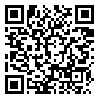BibTeX | RIS | EndNote | Medlars | ProCite | Reference Manager | RefWorks
Send citation to:
URL: http://ijce.iust.ac.ir/article-1-455-en.html
Seismic piezocone device (SCPTu) together with Resonant Column and Cyclic Triaxial test apparatus are
employed to measure small strain shear modulus (G0) of carbonate sandy and clayey soils of southern coasts of Iran.
A large area of southern regions of Iran is formed from clay, silt and sand. In this study, maximum shear modulus that
is derived from both field (by seismic piezocone) and laboratory (by Resonant Column and Cyclic Triaxial) tests on
soil samples from the southern region, indicated a meaningful effect of sample disturbance. Results show that in
laboratory tests, loose samples tend to become denser and therefore exhibit greater stiffness whereas dense samples
tend to become looser, showing a reduction in stiffness. According to the results of the present study, there are narrow
limits of soils shear moduli for which the laboratory tests and the field measurements yield approximately the same
amounts. This limit of shear moduli is about 30-50(MPa) for clay deposits and 70-100 (MPa) for sandy deposits. Since
the shear moduli of soils in small strains can also be computed from the shear wave velocity, also correlations based
on parameters derived from SCPTu test for shear wave velocity determination of sandy and clayey soils of the studied
area are presented. This study shows that shear wave velocity can be related to both corrected tip resistance and total
normal stress. The measurements of the damping ratio and shear module, because of a great disturbance of stiff
deposits during the sampling process and also due to considerable differences between the laboratory and field
results, by the laboratory approaches are not reliable and advised.
| Rights and permissions | |
 |
This work is licensed under a Creative Commons Attribution-NonCommercial 4.0 International License. |





